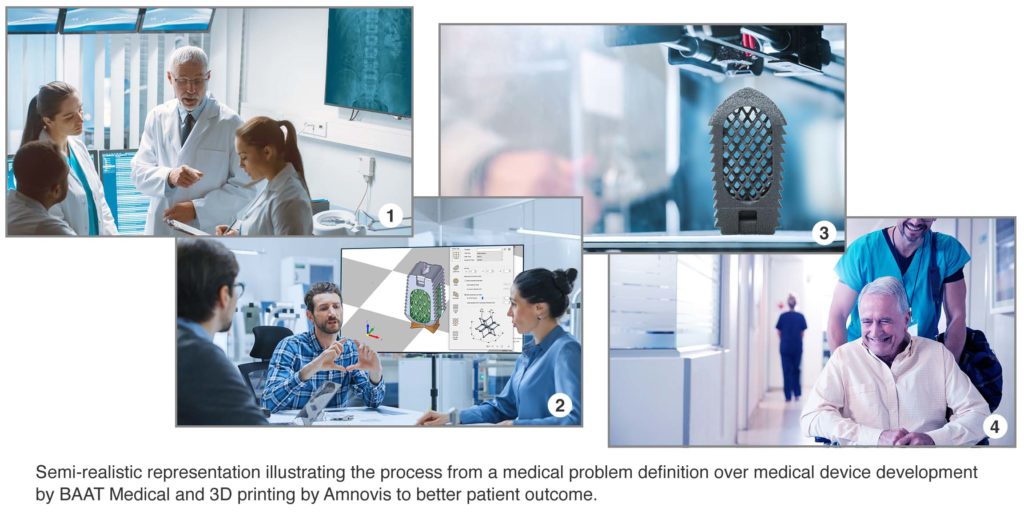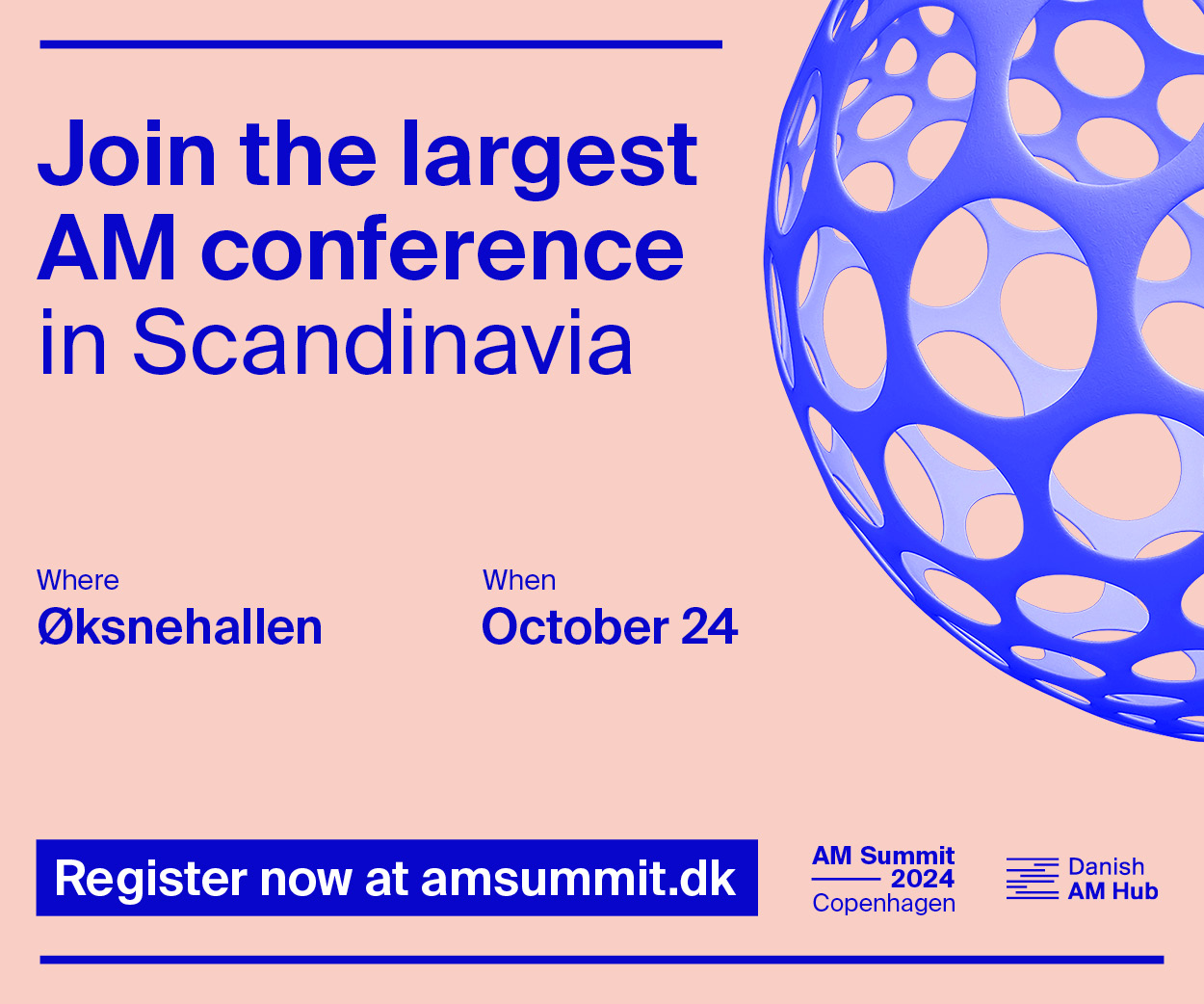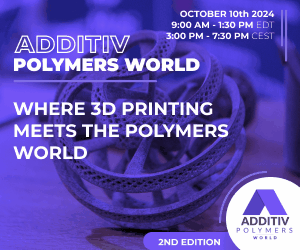Amnovis and BAAT Medical are partnering to quickly make medical devices together using 3D printing. The team can take a concept and bring it all the way through to engineering, manufacturing and approval. Amnovis is an ISO 13485 certified contract manufacturer, founded by former Layerwise and 3D Systems exec Peter Mercelis, while BAAT Medical is a 22-year-old company that specialises in the development, logistics and management of medical devices, helping companies turn ideas into FDA-approved products. BAAT has specialised so far in trauma and spinal fusion, making over 50,000 implants to date. The collaboration between the two firms will make it easier for medical device companies, doctors, inventors and startups to make their 3D printed device ideas come to life.

The team have a joint development roadmap for clients where they each contribute when their expertise is needed. They hope to shorten the time to market and offer more in-depth manufacturing, materials and development expertise than others.
Ruben Wauthle (also ex-Layerwise), Amnovis CEO, said:
“We are extremely proud to collaborate with BAAT Medical. We see great potential in jointly innovating various AM medical device applications. We know each other for years, share the same innovative drive, and collaborate intensively to better align design and development with material selection and manufacturing. As preferred partners, our joint offering comprises of the complete process for customers and prospects to aim high and move fast, while removing hurdles in medical device development, validation and manufacturing. At Amnovis, we rely on our comprehensive AM workflow and production platform, which is entirely ISO 13485:2016 certified. Digital process automation enables us to provide full traceability and repeatability to flexibly scale up manufacturing of standard and patient-specific AM medical devices.”
Gert Nijenbanning, Managing Director of BAAT Medical, said:
“It is great to intensify our collaboration with the AM innovators of Amnovis, with whom we successfully worked with before. We believe that efficiency in development and production throughout the whole chain is essential to keep investments in innovations of medical devices feasible, especially for European markets where the MDR is a reality. Together we want to build on the complementary expertise of Amnovis and BAAT Medical to collaborate and take 3D printing of medical devices to the next level. As preferred partners, we are able to cover the complete process, from initial idea to a certified product. We partner to optimally use the possibilities of current and future AM technologies as part of new business models for medical devices with improved patient outcomes. Amnovis and BAAT Medical, together, push the innovative edge of medical device OEMs and move faster through the development, validation and manufacturing stages.¨

This is a very smart collaboration. There are a lot of approvals flying about at the moment and a lot of startups and large firms attempting to bring 3D printed orthopedic and trauma implants to market. But there are very few people with experience in characterizing materials, qualifying parts and manufacturing in 3D printing in general. There are fewer people still who can do these things for metal 3D printing processes. Throw in medical device manufacturing and the Venn diagram becomes even smaller. And those who do have that kind of experience will find it not much trouble to secure work with Stryker, J&J or some of the other firms working in this area.

Hopefully the team will be availing themselves of the services of a graphic designer soon.
There is a war for talent in 3D printing at the moment and the most difficult positions to fill are those of metal sales leaders, application engineers and true manufacturing experts. Letting people rent this valuable expertise is therefore a very valuable thing to do. Also, those who do have a track record in getting 3D printed products to market are usually kept around by incumbents because of their expertise and their use to competitors. Currently PrinterPrezz offers a one-stop shop to bring products to market, as do Precision ADM, Lincotek and SwissM4M. With a lot of potential not only in orthopaedics but also nascent areas such as trauma, any help will be sorely needed.
I asked Erik Boelen, who works at 3D printed medical device consultancy Qas3d and has extensive experience with quality management in 3D printed medical devices, what he thought of the collaboration. He said that,
“These are two companies that are very serious about quality in medical devices. If you would like to put a 3D printed medical device on the market than these are two of the best partners that you could find. BAAT really understands how you can take a product and turn it into a medical device and Amnovis knows how to do 3D printing in a controlled manner and consistently make high quality 3D prints.”
As Stryker and others seem to want to print millions of devices, this will whet the appetite of startups and other firms even more than is the case currently. 3D printed medical implants took 30 years of development to become successful, but we are at the dawn of a growth phase which will make it one of the largest and most profitable parts of our industry.
Subscribe to Our Email Newsletter
Stay up-to-date on all the latest news from the 3D printing industry and receive information and offers from third party vendors.
You May Also Like
3D Printing Market Reaches $3.45B in Q2 2024, Marking 8.4% Year-Over-Year Growth
The global 3D printing market continued its upward trajectory in the second quarter of 2024, totaling $3.45 billion—a year-over-year increase of 8.4%. Despite a slight sequential decline from $3.47 billion...
New ABB Cobots Are 10 Times More Accurate for 3D Printing and More
ABB has introduced Ultra Accuracy GoFa cobots, which are ten times more accurate than the company’s previous cobots. While older industrial robots have driven innovation in concrete 3D printing, wire...
AM Expands Beyond 3D Printing at IMTS 2024
As discussed in our previous article on the Western hemisphere’s largest manufacturing trade show, the International Manufacturing Technology Show (IMTS), the industrialization of 3D printing was on display. This was...
Ursa Major & US Navy Make $25M Joint Investment in New 3D Printed Rocket Motor Prototype
Ursa Major, the Colorado-based company dedicated to building a North American rocket propulsion supply chain with advanced manufacturing, has become one of the first recipients of funding from the DoD’s...



































